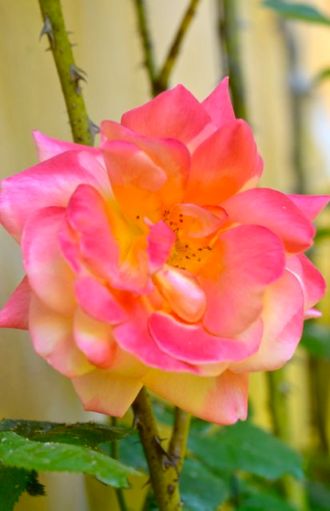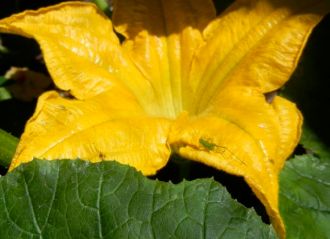
Mowing the pasture. Summer is here.
For those who move to California, particularly from the east coast, one of the biggest adjustments is that winter is the “green” season and summer is the “brown” season. When summer comes, the grasses in the open spaces of the chaparral areas of the state turn into the “golden” color that gives the state its nickname “the golden state”. And the rolling hills, scattered with oaks, are quite beautiful.

Lavender. This flower comes with a soundtrack.
On a more practical note, when the hills turn gold it means that summer is here and we need to mow the pasture. Fire is a real danger, especially near populated areas. The Oakland hills, just across the bay from us, burnt in 1991 with the cost of 25 lives and $1.5 billion in damage. When the grass gets dry, the big tractor mowers come out (we hire the guys, too big a job for us). And if you don’t get your mowing done, your neighbors will let you hear about it.

Lettuce at its peak.

Red leaf lettuce doing well this year.
But while the pastures are brown, our gardens are overflowing with green..and purple. Let’s start with the purple. Our lavender, once just on the cusp, is in full bloom. It will last for months and the honeybees will work it, almost exclusively, for the rest of the summer. Here at the “farm” summer comes with a soundtrack, the constant humming of bees in the lavender. Both the honeybees and the native bees enjoy the lavender and completely ignore us, and everything else, while they work the flowers. Happily, the native bees will work / pollinate some of the other plants, while the honeybees seem to focus on the “highest and best” sources of nectar. That focus is what gives us “varietal” honey like clover or orange-blossom. I guess we basically get lavender honey.

The peas are just coming in.

The nasturtiums are very, very happy this season.
As for the green, it is all around us in the garden. Our peas are just forming pods, lettuces are at their peak and the tomatoes show their frist fruit. The tomatoes have us very excited, lots of blossoms and growth foreshadow a good crop in the late summer. And the basil runs in parallel to the tomatoes. We see Caprese salads in our future. Oddly, our zucchini plant seems more interested in growing huge leaves than in producing zucchini. We still get zucchini, but yields are lower than expected. Our arugula is also low-yield (part of a bed that seems unhappy this year). As zucchini and arugula are “easy” crops, this is a bit humbling, but such is the nature of the garden and orchard. We get a bumper crop of cherries and can barely grow zucchini. Go figure. Continue reading →
 We think every day should be Earth Day (just like every day should be “grateful to be alive day”). But we will celebrate today with a dozen roses. Enjoy. And no matter where you are we hope you get a moment outside to take a walk and appreciate the miracle that is our good earth.
We think every day should be Earth Day (just like every day should be “grateful to be alive day”). But we will celebrate today with a dozen roses. Enjoy. And no matter where you are we hope you get a moment outside to take a walk and appreciate the miracle that is our good earth.





























